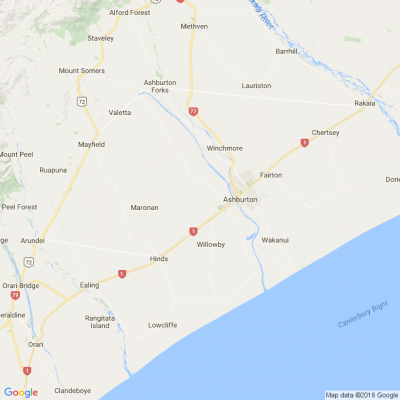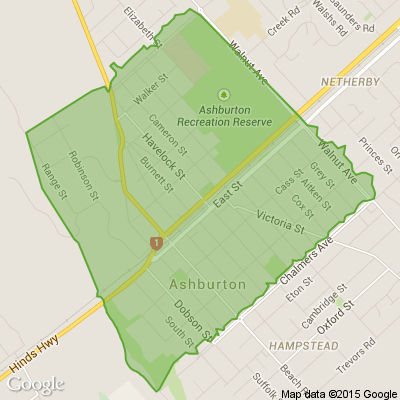Landowners contacted as Significant Natural Areas identified in Mid Canterbury
By local democracy reporter Jonathan Leask:
Five landowners have already been contacted as Significant Natural Areas (SNA) are identified in Mid Canterbury.
The SNA process has been contentious in other parts of the country, particularly in Northland and the West Coast, as greater restrictions can be placed on designated land.
In Mid Canterbury the process is in its infancy, but is building on previous environmental provisions.
It is not known how many private properties could be affected, but five letters have already gone out to landowners in the region, the Ashburton District Council confirmed.
The council started a survey earlier this year of existing areas of significant nature conservation value (ASCV) that could be deemed SNAs.
Council compliance and development group manager Jane Donaldson said the move came in anticipation of the National Policy Statement for Indigenous Biodiversity (NPSIB), which has recently come into force.
This policy statement directed councils to have consistent approaches in their policies, plans and strategies to maintain indigenous biodiversity.
"The survey is currently an audit of existing SNAs, referred to as ASCV’s, but it also has crossover with council’s responsibilities under the NPSIB, and also council’s draft biodiversity strategy.”
The process of identifying SNAs was still under development, with the council required to identify SNAs by 2028, Donaldson said.
It was unknown how many landowners in Mid Canterbury are likely to be affected, she said.
“It is expected that affected owners will initially be contacted individually”.
So far five letters had been sent out, Donaldson said, noting that some additional land was within the conservation estate.
A copy of a letter to affected property owners provided by the council outlined how it was undertaking an initial assessment of the existing ASCVs and “has discovered some areas where further investigation is needed”.
“In some cases, this might be because of vegetation change, but in others, it might be because of errors in the initial creation of the overlay maps.
“There is the possibility that these might be creating unnecessary regulatory hurdles or risks for farming operations,” the letter stated.
The letter also explained that due to the NPSIB, the council “may have to take a district-wide look at biodiversity” to ensure its existing mapping is correct and accurate.
The preference is “for this to be a collaborative project between council and landowners.”
Eventually, a Resource Management Act process would need to be followed to seek any changes in the District Plan, Donaldson said.
The District Plan, adopted in 2014, has provisions regarding ASCVs – listing 67 sites across the district, but the current project and related work may result in changes, Donaldson said.
“But these are yet to be developed and would also require a Resource Management Act process to be considered”.
Local iwi have been briefed and approached for discussion about involvement in the process, but those discussions are yet to occur, Donaldson said.
-------------------------------------
EXPLAINER: What is an SNA?
Significant Natural Areas are considered to be areas of New Zealand’s most important remnants of native habitat that must be protected to ensure the ongoing biodiversity of the country.
The Resource Management Act (RMA) 1991 requires that they are protected.
It refers to "the protection of areas of significant indigenous vegetation and significant habitats of indigenous fauna" - or SNAs.
The term 'significant' is not defined by the Resource Management Act, and its ambiguity has resulted in confusion among resource managers and users, as well as national disparity in approach to the identification of SNAs.
Councils around the country are responsible for identifying SNAs in their territory, and because of that issue around "significant", each council can apply different standards when assessing SNAs.
Part of the public concern about SNAs is that most are on private land, and those who own that land are worried about losing it, or the land itself losing its value and adding complications for owners.
Existing practices in or near SNAs will generally be able to continue, but restrictions will apply if a landowner wants to use the land for a new activity, and therefore need to apply for consent.

Secure your homes over summer
Police are reminding people to keep their homes secure during the summer months.
Inspector Glenda Barnaby, Christchurch Area Prevention manager, says daytime burglaries are just as common as nightime burglaries.
“Burglaries can be committed at any time of the day, and coming into warmer months there is more opportunity for thieves."
"Although a majority of burglaries involve forced entry through windows and doors, we are starting to see more incidents at insecure premises. Police deal with cases where burglaries are committed in broad daylight, sometimes even while the victim is at home. Good weather means open doors and windows, which makes homes more vulnerable to burglars.”
Inspector Barnaby says there’s a few things people can do to reduce their changes of a burglary being committed.
⚠️ If you’re going outside for gardening, relaxing in the sun, or working in the garage, take a moment to lock your doors and secure your windows first.
⚠️ Do the same at night when you go to bed - keep your doors and windows secure and close your curtains. Fitting window stays means you can get a breeze coming through, while keeping your windows secure.
⚠️ Get to know your neighbours - let them know if you’re going away and look out for one another.”
If you see any suspicious activity, people or vehicles in your neighbourhood, don't hesitate to contact Police.
If you witness or suspect any illegal activity, please call 111 if it is happening now, or make a report through 105 either online or over the phone, if it is after the fact.

Poll: Pedestrian access is being extended to the Ōtakaro Avon River - good idea?
Pedestrian access from one of Christchurch’s favourite streets is being extended all the way to the Ōtakaro Avon River. This new 12m-wide pathway will give you a direct, easy route from the street to the river promenade ... perfect for a stroll, a coffee run, or just soaking up the riverside vibes.
We want to know: In your view, what makes a city people-friendly?
What else should our urban areas be doing to support better community connections?
Curious about the full plans? You can check them out here.

-
90.2% Yes
-
9.8% No
Poll: Are our Kiwi summer holidays helping us recharge, or holding the economy back? ☀️🥝
There’s growing debate about whether New Zealand’s extended Christmas break (and the slowdown that comes with it) affects productivity.
Tracy Watkins has weighed in ... now it’s your turn. What’s your take? 🤔

-
72.7% We work hard, we deserve a break!
-
16.3% Hmm, maybe?
-
11% Yes!






 Loading…
Loading…